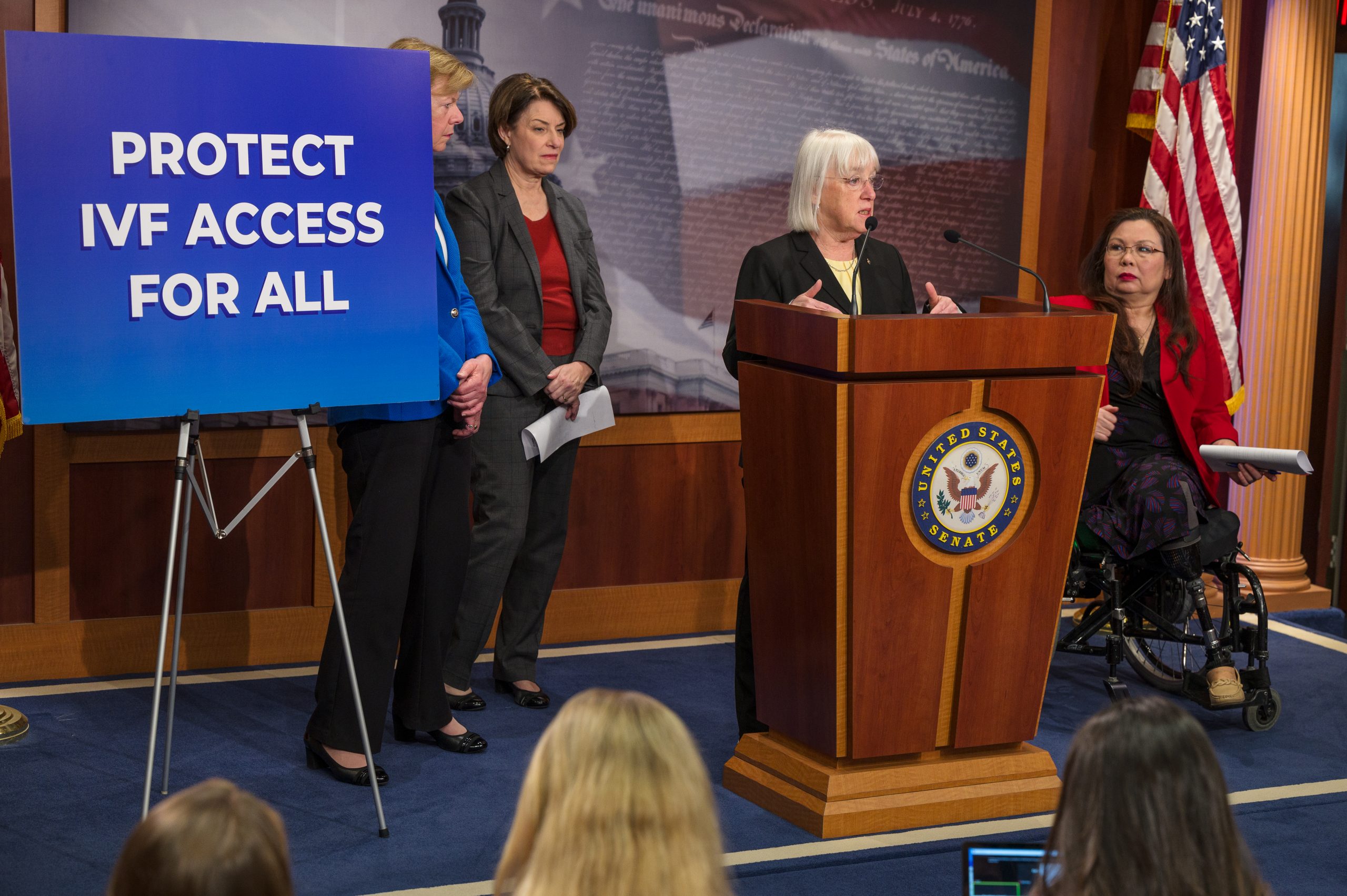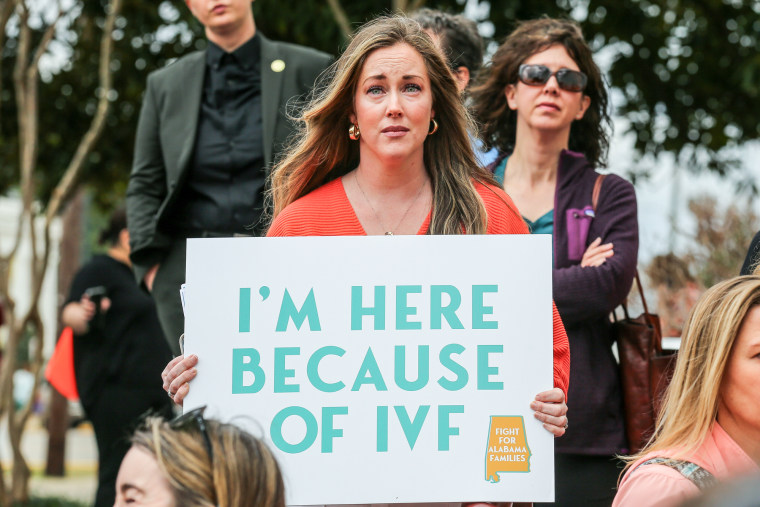
Bladderwrack and IVF: The Seaweed Secret You Didn’t Know You Needed
April 8, 2025
RMA Long Island IVF: Your Guide to Fertility, Family, and Hope
April 8, 2025The Senate IVF Bill: What You Need to Know About This Game-Changing Debate
The Senate IVF bill has been making waves lately, and if you’re like most people, you might be wondering what it’s all about. Is it just another boring political argument, or does it actually affect real families like yours? Spoiler alert: it’s a big deal! In vitro fertilization (IVF) helps millions of people start families, but it’s caught in a tug-of-war between lawmakers. This blog dives deep into the Senate IVF bill, unpacking the drama, the stakes, and the little-known details that could change lives. From surprising political twists to practical tips for navigating fertility challenges, we’ve got you covered with fresh insights you won’t find anywhere else.

What Is the Senate IVF Bill, Anyway?
The Senate IVF bill, officially called the Right to IVF Act, is a piece of legislation that’s all about protecting and expanding access to in vitro fertilization across the United States. IVF is a medical process where an egg and sperm are combined outside the body to create an embryo, which is then placed in the uterus to grow into a baby. It’s a lifeline for people struggling with infertility—about 1 in 8 couples in the U.S., according to the CDC.
Why It Matters
This bill isn’t just paperwork—it’s personal. It aims to:
- Make IVF a legal right nationwide.
- Force insurance companies to cover IVF costs (which can hit $20,000 per cycle!).
- Protect doctors and clinics from laws that might shut them down.
But here’s the catch: not everyone agrees on it. Some senators love it, some hate it, and the fight’s been heating up since early 2024.
The Big Players
The bill was introduced by Senator Tammy Duckworth from Illinois, a mom of two IVF babies herself. She’s a war veteran who lost both legs in combat, and her personal story adds a powerful twist to the debate. On the flip side, many Republican senators have blocked it—twice in 2024 alone—calling it a “political stunt.” We’ll dig into why later.
The Backstory: How IVF Became a Political Hot Potato
IVF used to be a quiet medical topic, but it’s now front-page news. Why? It all started with a wild court ruling in Alabama in February 2024. The state’s Supreme Court said frozen embryos (those little pre-babies created during IVF) are legally “children.” Clinics freaked out, paused IVF treatments, and suddenly, everyone was talking about it.
The Ripple Effect
- Alabama Chaos: Clinics stopped IVF until lawmakers passed a quick fix to protect them.
- National Spotlight: People started asking, “Could this happen in my state?”
- Senate Steps In: Democrats saw a chance to lock in IVF rights federally, while some Republicans pushed back.
Fun fact: Did you know IVF has been around since 1978? The first “test-tube baby,” Louise Brown, is now a mom herself! Yet, 47 years later, it’s still stirring up drama.
Why the Senate IVF Bill Keeps Failing
The Right-kilometer Right to IVF Act has hit roadblocks—specifically, Senate votes in June and September 2024. Both times, it got 51 votes for and 44 against, but it needed 60 to pass. So, what’s the holdup?
The Republican Block
Most Republicans say they support IVF but think the bill goes too far. They argue:
- States should decide, not the federal government.
- It’s a “show vote” by Democrats to make them look bad before elections.
- Some worry it clashes with their beliefs about embryos being life.
Only two Republicans—Lisa Murkowski (Alaska) and Susan Collins (Maine)—voted yes both times. Meanwhile, big names like Donald Trump and his VP pick, JD Vance, say they’re pro-IVF but didn’t push for the bill. Trump even promised free IVF if elected, yet Republicans still said no. Confusing, right?
The Democrat Push
Democrats, led by Duckworth and Senate Majority Leader Chuck Schumer, say it’s about families. They point to:
- Couples desperate to have kids.
- Rising infertility rates (up 15% since 1990, per a 2023 study).
- Threats from “fetal personhood” laws that could ban IVF.
The Secret Struggles Behind the Bill
Here’s where it gets juicy. Politicians don’t always share the personal stuff, but it’s there. Take Tammy Duckworth—she’s not just a senator; she’s an IVF mom who fought infertility for a decade after her war injuries. “IVF gave me my girls,” she said in a 2024 speech. “No one should take that away.”
Then there’s Rick Scott, a Republican from Florida. His daughter was going through IVF during the debate, and he still voted no. Why? He suggested a tax credit instead of a mandate—less government, more choice. It’s a peek into how personal stakes shape votes.
Hidden Hobbies & Quirks
- Tammy Duckworth: Loves sci-fi novels—her fave is Dune. Bet she’d geek out over a baby named Paul Atreides!
- Chuck Schumer: A BBQ grill master. Maybe he’s plotting IVF strategy over ribs.
- Lisa Murkowski: An avid hiker. She’s probably dreaming of Alaska trails while voting yes.
These little tidbits show they’re real people, not just suits in D.C.
What’s at Stake for Everyday Families
If the bill fails, IVF’s future gets murky. Here’s what could happen:
Costs Skyrocket
Without insurance mandates, IVF stays crazy expensive. A 2024 FertilityIQ report says:
- Average cost per cycle: $12,000–$20,000.
- Most need 2–3 cycles, so that’s $36,000–$60,000.
- Only 19 states currently require some coverage.
Access Shrinks
If more states pass embryo-personhood laws, clinics might close shop. A 2025 study from the Guttmacher Institute predicts 12 states could restrict IVF by 2030 without federal protection.
Emotional Toll
Infertility’s already tough—add legal drama, and it’s a gut punch. “Couples feel helpless,” says Dr. Jane Frederick, a fertility expert from California. “They just want a family, not a courtroom battle.”
The Science of IVF: What Most People Miss
IVF isn’t magic—it’s science with a human touch. Here’s a quick rundown:
How It Works
- Stimulation: Meds boost egg production.
- Retrieval: Eggs are collected (sounds scarier than it is!).
- Fertilization: Sperm meets egg in a lab dish.
- Transfer: Embryo goes into the uterus.
Cool Stats
- Success rate: 50% for women under 35, drops to 20% by age 40 (ASRM, 2024).
- 8 million IVF babies born worldwide since 1978.
- 1–2% of U.S. births yearly are via IVF.
The Embryo Debate
The bill’s critics focus on unused embryos. IVF often creates extras, and some get discarded. To pro-life folks, that’s a life lost. To others, it’s just cells. The bill sidesteps this by letting patients decide—freedom over mandates.
How the Bill Could Change Your Life
Imagine you’re trying to have a kid, and IVF’s your shot. Here’s how the Right to IVF Act could help:
Real-Life Wins
- Cheaper Costs: Insurance covers it, so you’re not broke after one try.
- More Options: Clinics stay open, even in strict states.
- Peace of Mind: No worrying about new laws banning it.
A Mom’s Story
Meet Sarah, a 34-year-old teacher from Ohio. She and her husband spent $40,000 on IVF after three years of trying naturally. “We got our son, but we’re in debt,” she says. “If insurance covered it, we’d have tried for a second kid.” The bill could’ve saved her family stress—and cash.

The Other Side: Why Some Say “No Way”
Not everyone’s on board. Critics have legit points worth hearing:
State Rights
Republicans like Ted Cruz (Texas) say states should rule themselves. “Why let D.C. boss us around?” he asked in a 2024 speech. Their fix? A bill cutting Medicaid funds if states ban IVF. Democrats shot it down, saying it’s too weak.
Cost Concerns
Mandating coverage could spike insurance premiums. A 2024 Kaiser Family Foundation study estimates a 5–10% hike. Opponents say that’s unfair to folks who don’t need IVF.
Moral Clash
Some, like the Southern Baptist Convention, call IVF “playing God.” They’re mad Trump’s pro-IVF stance doesn’t match their embryo stance. It’s a faith vs. science showdown.
What’s Next for the Senate IVF Bill?
As of March 23, 2025, the bill’s stuck. Democrats might try again, but with elections looming in 2026, it’s a long shot. Here’s the outlook:
Short-Term
- Election Play: Both sides are using IVF to win votes. Expect more ads about it.
- State Moves: Places like Texas or Missouri might tighten embryo laws, pushing the issue back to D.C.
Long-Term
- Court Fight: If states ban IVF, it could hit the Supreme Court. After Roe v. Wade’s fall, anything’s possible.
- Tech Twist: New fertility breakthroughs (like artificial wombs) might shift the debate by 2030.
“IVF’s not going away,” says Dr. Alan Penzias, a Boston fertility expert. “The question is who controls it.”

Practical Tips: Navigating IVF Without the Bill
Since the bill’s not law yet, you’re on your own for now. Don’t panic—here’s how to make IVF work:
Step-by-Step Guide
- Research Clinics: Check success rates on SART.org (Society for Assisted Reproductive Technology).
- Save Smart: Open a Health Savings Account (HSA)—Rick Scott’s idea isn’t bad!
- Ask for Help: Crowdfund or tap family. Sarah raised $5,000 on GoFundMe.
- Know Your State: Look up local laws—19 states have some insurance rules; 31 don’t.
Do’s and Don’ts
✔️ Do compare clinic costs—prices vary wildly.
✔️ Do talk to other IVF parents for real talk.
❌ Don’t assume it’s one-and-done—plan for multiple tries.
❌ Don’t skip legal advice if your state’s iffy on embryos.
Budget Hacks
| Expense | Avg. Cost | Save This Way |
|---|---|---|
| Meds | $3,000–$5,000 | Buy generics or shop pharmacies. |
| Procedure | $12,000 | Look for clinic discounts. |
| Freezing Embryos | $1,000/year | Split with a sibling or friend. |
The Emotional Side: Coping with the IVF Rollercoaster
IVF’s not just about money or laws—it’s a heart thing. Here’s how to stay sane:
Real Talk
- Highs: Seeing that first ultrasound? Priceless.
- Lows: Failed cycles hurt. A 2024 Resolve study found 60% of IVF patients feel “hopeless” at some point.
Survival Tips
- Lean On Friends: Join an IVF support group—online ones rock.
- Self-Care: Yoga, journaling, or even binge-watching The Office can reset you.
- Talk It Out: Therapy’s not weak—it’s smart. “Couples need a safe space,” says therapist Laura Berman.
Busting IVF Myths
There’s tons of nonsense out there. Let’s clear it up:
Myth #1: IVF Babies Are “Unnatural”
Truth: They’re as normal as any kid. Studies (NIH, 2024) show no health diffs long-term.
Myth #2: It’s Only for Rich People
Truth: It’s pricey, but 1 in 5 IVF users earn under $50K a year (FertilityIQ, 2024).
Myth #3: It Always Works
Truth: Nope—50/50 shot under 35. Older? Tougher odds.
The Fan Angle: Fun Facts About IVF and the Senate
Fans love the behind-the-scenes scoop. Here’s some trivia:
Senator Secrets
- Tammy Duckworth: Once dressed as Wonder Woman for Halloween—IVF’s her superpower!
- Ted Cruz: A beard guy now, but he’s clean-shaven on IVF support—go figure.
- Susan Collins: Knits baby blankets. Maybe she’s pro-IVF for more yarn projects?
IVF Quirks
- Celeb Babies: Chrissy Teigen’s daughter Luna? IVF. So’s Kim K’s son Psalm.
- Record Breaker: Oldest IVF mom? 66, in India, 2019. Wild!
How You Can Get Involved
This isn’t just a Senate fight—it’s your fight. Here’s how to jump in:
Action Steps
- Call Your Senator: Takes 5 minutes—say, “Support the Right to IVF Act!”
- Spread the Word: Share this blog on X or TikTok—tag #IVFRights.
- Donate: Groups like Resolve fund IVF advocacy.
Why It’s Worth It
One call could tip a vote. Imagine telling your future kid, “I helped make you possible.”
Wrapping It Up: The Future of IVF Hangs in the Balance
The Senate IVF bill isn’t just politics—it’s about dreams, families, and what’s fair. Will it pass? Maybe not soon, but the fight’s far from over. Tammy Duckworth’s pushing, families are hoping, and science keeps advancing. Whether you’re pro, con, or just curious, this debate’s shaping the next generation—literally.
What do you think? Should IVF be a right? Drop your take below, or share your story—we’re all ears! And if you’ve got a senator to nudge, now’s the time. Let’s keep the convo going.
